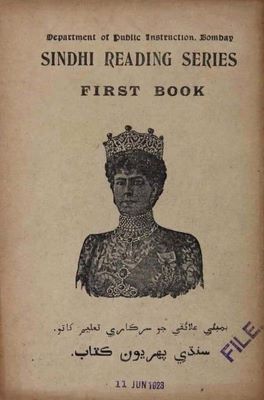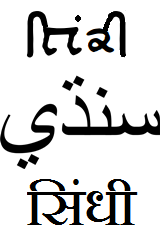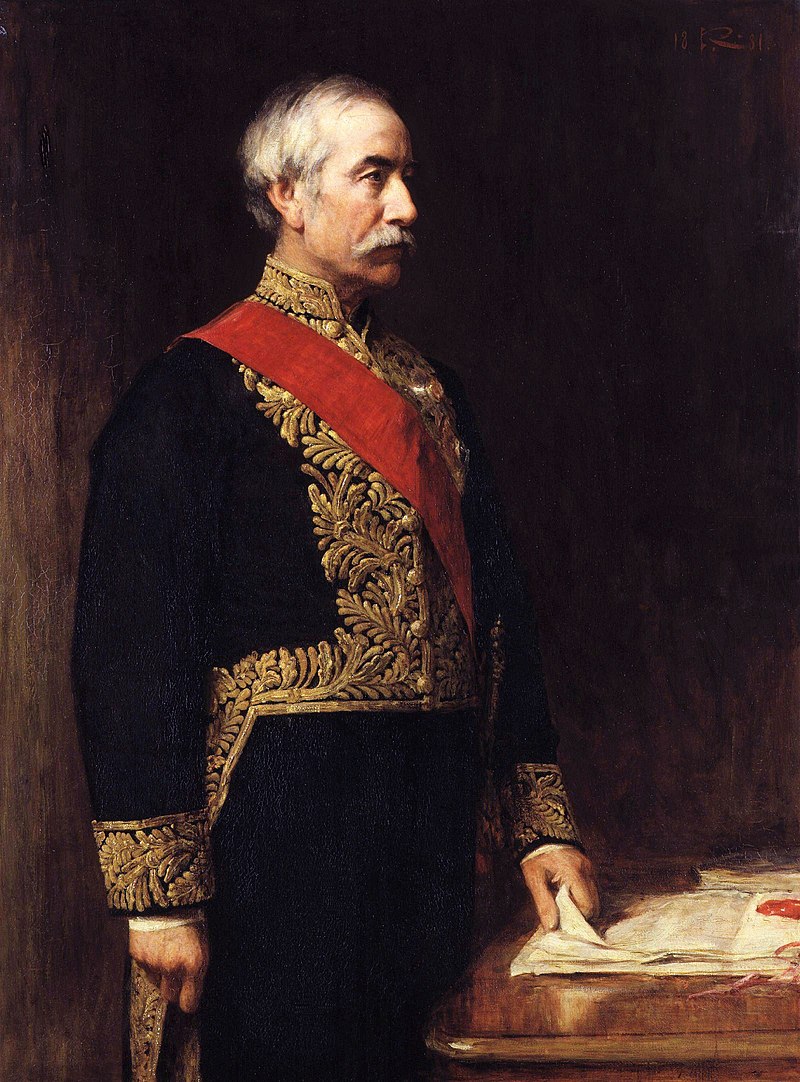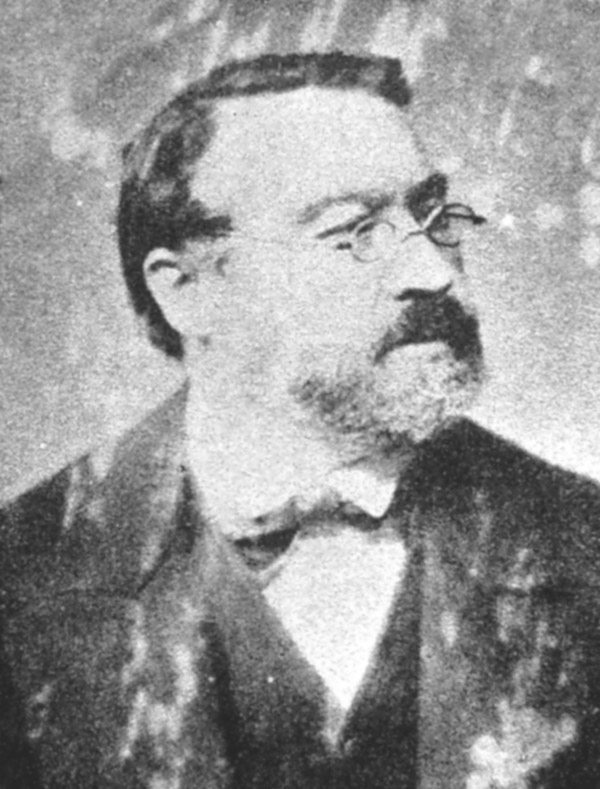
The history of Sindhi language shall always remember the British contribution towards Sindhi language, which helped it find its true place amongst the world’s elite group of developed languages
By Dr. Baldev B. Matlani
Language is an apt reflection of the life, culture and the living pattern of a nation. One could procure the history of a nation through the history of their language. Early indicators reveal that the Sindhi language, which has its roots in the Mohan-jo-Daro civilization, underwent a subsequent transformation over the years due to the influences of Aryan, Persian, Greek, Arabic and English languages in the ancient eras.
 Arabian tourists like Al-Berooni, through their travelogues “Kitab-Ul-Hind” (1030 A.D.), or the writings on the tablets found from Bhambhore reveal that before the advent of Arabs into Sindh (712-1051 A.D.), Sindhi was prevalent in Sindh and used in day-to-day dealings. Not only was it spoken but also written in the form of different scripts. Al-Berooni has cited many Sindhi words proving that Sindhi, even in those days was a widely spoken language and rich in vocabulary. The seals found from Mohan-jo-Daro lead us to believe that they must have had some mechanism to read, write and teach Sindhi language. In the 8th century many Arabian educationists and thinkers, settled in Sindh contributed lavishly to the enrichment of the Sindhi language along with teaching their own language. During the Soomra era (1051-1351 A.D.), the rulers too contributed to the teaching of Sindhi language, and also to the spread of the Islamic faith. The scholars used Sindhi language, in addition to Kachhi, Gujarati and Siraki to unravel the mysteries of Shariah, Sufism and Spiritual pursuits. All of these were written in an indigenous Sindhi script (40 letter Khwajiki). This leads us to believe that even during the 11th century, the Sindhi language was extensively used in literature, trade and also in the day-to-day affairs.
Arabian tourists like Al-Berooni, through their travelogues “Kitab-Ul-Hind” (1030 A.D.), or the writings on the tablets found from Bhambhore reveal that before the advent of Arabs into Sindh (712-1051 A.D.), Sindhi was prevalent in Sindh and used in day-to-day dealings. Not only was it spoken but also written in the form of different scripts. Al-Berooni has cited many Sindhi words proving that Sindhi, even in those days was a widely spoken language and rich in vocabulary. The seals found from Mohan-jo-Daro lead us to believe that they must have had some mechanism to read, write and teach Sindhi language. In the 8th century many Arabian educationists and thinkers, settled in Sindh contributed lavishly to the enrichment of the Sindhi language along with teaching their own language. During the Soomra era (1051-1351 A.D.), the rulers too contributed to the teaching of Sindhi language, and also to the spread of the Islamic faith. The scholars used Sindhi language, in addition to Kachhi, Gujarati and Siraki to unravel the mysteries of Shariah, Sufism and Spiritual pursuits. All of these were written in an indigenous Sindhi script (40 letter Khwajiki). This leads us to believe that even during the 11th century, the Sindhi language was extensively used in literature, trade and also in the day-to-day affairs.
Al-Berooni has cited many Sindhi words proving that Sindhi, even in those days was a widely spoken language and rich in vocabulary
The Sammas (1351-1521 A.D.) established many seminaries to impart Islamic education onto the Sindhi population and the city of Thatta became the focal point of education and literary research works. The city attracted many scholars from as distant places as, Iran, Afghanistan, Khurasan and other Central Asian countries. Thus the Sindhi language got a fillip. Many renowned poets like Qazi Qadan, Isahaque Ahangar and Makhdoom Ahmed Bhatti came to the fore during this period. The times of Arghons, Turkhans and Moghuls (1521-1719 A.D.) saw the emergence of poets like Shah Lutufullah Qadri, Shah Karim and Makhdoom Nooh, who were immortalize through their classical poetry. “Bayan-ul-Aarfeen”, a historical masterpiece was also written in those times.
The British declared Sindhi the official language of Sindh, in place of Persian in the year 1848
The rein of Kalhoras (1719-1783 A.D.) brought new twists and techniques to Sindhi language. The Kalhora era saw emergence of Makhdoom Abu-al-Hassan ‘Sindhi’, Makhdoom Ziauddin and Makhdoom Mohammad Moin Thatvi. It is termed as a golden era of Sindhi literature as the trinity of Sindhi literature, Shah, Sachal and Sami belongs to this period. Even in the days of Talpurs (1783-1843 A.D.), Sindhi was taught alongside Islamic education in madrasahs in Sindh. Prior to the British invasion, during the days of Kalhoras and Talpurs, Sindhi was enriched by many a great lover of the language. Apart from the well-known trinity of Sindhi literature, other great poets like Abdul Rauf Bhatti, Dalpat and Rohal contributed to the enrichment of the language. Apart from its usage for daily communications, the Sindhi language was extensively used in business transactions. The Khwajas, Memons and Sindhi Hindus wrote it in their respective scripts.

In 1851 (Sir) Bartle Frere issued a circular requiring all officers in civil employ to pass an examination in colloquial Sindhi
The British rule (1843-1947) set up new institutions where education in the English language could be imparted. In the following years they attempted to make it a compulsory medium of instruction, but despite novel initiations their efforts met with limited success. Subsequently, the Bombay Board of Education took up the question of organizing an educational agency in Sindh, and about the same time there was a movement in favour of making Sindhi, the official language of Sindh. A few of the English officials could speak Sindhi and the records were kept in mongrel Persian. Further, in 1851 (Sir) Bartle Frere issued a circular requiring all officers in civil employ to pass an examination in colloquial Sindhi, but the language could neo be used for official correspondence until it had an approved script of alphabet. Captain (Sir) Richard Burton strongly advocated the adoption of Arabic alphabet, with such addition of dots and signs that would be necessary to indicate peculiar Sindhi phonetics. Captain Geroge Stack, the only one on par with Sir Burton’s Knowledge of Sindhi language, contended for the adoption of any of the Hindu-Sindhi alphabets already in use among traders, with similar modifications. Mr. Frere was of the opinion that Hindus would not learn a particular script, whereas neither would the Muslims condescend to use the other. However in 1853, the court of directors of the East India Company decided that the Arabic alphabet script should have a trial and sanctioned n annual expenditure of ` 10,000/- for education purposes. Thus, Mr. Frere appointed Mr. Ellis B. H. and provided him with the assistance of some native scholars, such as, Rai Bahadur Narain Jagannath Vaidya, Diwan Pribhdas Ramchandani, Diwan Udhara Mirchandani, Diwan Nandiram Mirani, Khan Bahadur Mirza Sadiq Ali Beg, Mian Mohd., Qazi Ghulam Ali and Mian Ghulam Hussain. Their task was to devise an Arabic alphabet script and extend it from the 29 letters to 52 letters. After extensive study, the same was printed and issued in July 1953, after which the preparation of school books by translation from Persian, Urdu, Marathi and Gujarati, went on apace.
The British declared Sindhi the official language of Sindh, in place of Persian in the year 1848, Sir George Clark, the then Governor of Bombay issued this order sot that the language hereinafter could be used in education, literature, and the courts. They regularized the newly adopted Sindhi script and established schools and colleges to impart education in Sindhi language and encouraged the printing of Sindhi books. These steps have largely contributed towards the preservation and progress of the Sindhi language.
Captain George Stack came out with dictionaries in English-Sindhi and Sindhi-English in the year 1849 and 1855 A.D
The contributions by the British towards the Sindhi language are invaluable. Sir Richard Burton in his book ‘Sindh and the Races inhabitant in the Valley of River Indus’ writes, “It (Sindhi) belongs to the Indian class of languages, and is directly derived from Sanskrit; yet it is a perfectly distinct dialect, and not, as has been asserted, a mere corruption of Hindustani . . .” Not very long after Sindhi language was made the official language of Sindh, Captain George Stack came out with dictionaries in English-Sindhi and Sindhi-English in the year 1849 and 1855 A.D. respectively. He utilized the services of Pandit Brahamanand and Sat Chit Anand of Hyderabad (Sindh) and published these dictionaries in the Devanagari script. Continuing his work on the Sindhi language, he further published another book “Grammar of Sindhi language” in the year 1849.
The first major contribution of the British towards the Sindhi language was by Sir Ernest Trumpp. He had a Sindhi typeset specially made in Germany for use in Sindhi printing. This led to the printing of the first ever publication of “Shah-jo-Risalo” from Leipzig, Germany in 1866 in the newly formed official Arabic-Sindhi script. The book was published as a series on Sindhi literature with the permission of Indian government and with the help of Sir Bartle Frere, the then Governor of Bombay Presidency.

The first major contribution of the British towards the Sindhi language was by Sir Ernest Trumpp. He had a Sindhi typeset specially made in Germany for use in Sindhi printing
Dr. Ernest Trumpp in his book ‘Grammar of Sindhi Language,’ published in the year 1872 from London and Leipzig, states, “Sindhi is a pure Sanskritical form of language which is more free from foreign elements than any other of the North Indian dialects. The old Prakirit grammarians may have had their good reasons to designate the Apabhramsa dialect, from which the moder Sindhi is immediately derived as the lowest of all the Prakirit dialects. Btu if we now compare Sindhi with its sister tongues, we must assign to it in a grammatical point of view, the first place among them. It is much more closely related to the ancient Prakirit than Marathi, Hindi, Punjabi and Bengali of our days and it has preserved an exuberance of grammatical forms for which all its sisters may well envy it. . .” Sir Trumpp, in the preface of this 738-page book writes, “There is room for improvement in Sindhi script. Hindustani (Urdu) is taught in Indian missionary schools and they can also learn Sindhi with just the addition of few dots, here and there. . .” George Shirt compiled another dictionary from English-to-Sindhi language. Another Britisher Mr. Beams then worked on a book called “Comparative Grammar of Modern Aryan Languages in India” between 1872 and 1879, and provided sufficient space to the Sindhi language. A few years later in 1884, Mr. Seamore from Karachi published another book titled, ‘A Grammar of the Sindhi Language.’
Subsequently, in the year 1911 Sir George Grierson published the book “Linguistic Survey of India” from Bombay. The volume VIII, part I of the said book released in 1919, contains different specimens of Northwestern languages of Indo-Aryan family. Sindhi and Lahanda languages are explained in detail from a linguistic perspective. It is a highly acclaimed work on the Sindhi language, which encompasses the basic structure through construction, evolution and grammar of the Sindhi language. Many noted scholars do not subscribe to Dr. Trumpp and Sir Grierson’s hypothesis, which states that the Aryan invasion led to the complete displacement of the aborigines. The overwhelming of the indigenous people by the Aryans may have affected their language, lifestyle, customs, traditions, culture and beliefs, but despite this, the Sindhis have still maintained their own culture and civilization even until now after the passage of many millenniums. Sir Grierson in his first volume of the above said book, which got delayed by eight years and published in 1927, after publication of its VIII volume, said, “Sanskrit is not the language of Aryans imported from outside, rather it is a dialect of Udichya of the Prakirit of North-Western areas on the banks of river Indus, perfected by learned people of those times. . .”
Mr. Beams then worked on a book called “Comparative Grammar of Modern Aryan Languages in India” between 1872 and 1879, and provided sufficient space to the Sindhi language
This piece of research by Sir Grierson is so huge that the Sindhi translation of the part I of volume VIII, Dr. Fahmida Hussain, Director, Shah Abdul Latif Bhittai Chair, Karachi University, encompasses 700 odd pages and has been published by the Sindhi Language Authority (Hyderabad – Sindh) in the year 2000.
One of the more precious works by the British, is the book titled, ‘Shah Abdul Latif of Bhit – His poetry, Life and Times’ written by Dr. H. T. Sorley and published in the year March 1938. It is a thesis written for Doctorate at Oxford University, London. Dr. Sorley while describing Sindhi people in his book’s preface, says, “I dedicate it gratefully to the people of Sindh with whom I have lived during the years. I have been treated with an unprecedented generosity. If my work helps scholars outside Sindh to obtain some idea of the true thought and feeling of the people, who dwell in the lower Indus valley, I shall believe myself to be more than handsomely repaid for all my labor.” The Oxford University Press published this research work of Dr. Sorley, and this is still recognized as the most reliable thesis ever written. He published another book under the title “Musa Pervagons”, in which he has compared the mystic poetry of different languages such as, Greek, Latin, Chinese, French, Arabic, Urdu and Sindhi poets and concluded that none of these poets is comparable to Shah Abdul Latif Bhittai. He explains with total humility, “It is not justifiable to give preference to any one talented poet over another. It will always remain controversial, but as far as my personal opinion is considered of the 13 poets of seven languages, Shah Abdul Latif and his work on mystic poetry, elevating one to a state of trance, shall always stand tall and occupy its place above others. . .”
Such has been the contribution of the British, who have played an unforgettable role in helping the cause of the Sindhi language. This article, due to space constraints may not be a comprehensive report on the British contribution to the Sindhi language, but all the same would have presented you with a fairly good idea on their contribution and works on the Sindhi language. The history of Sindhi language shall always remember the British contribution towards Sindhi language, which helped it find its true place amongst the world’s elite group of developed languages.
____________________